Nonprofit Thank You Letter Template for Donors
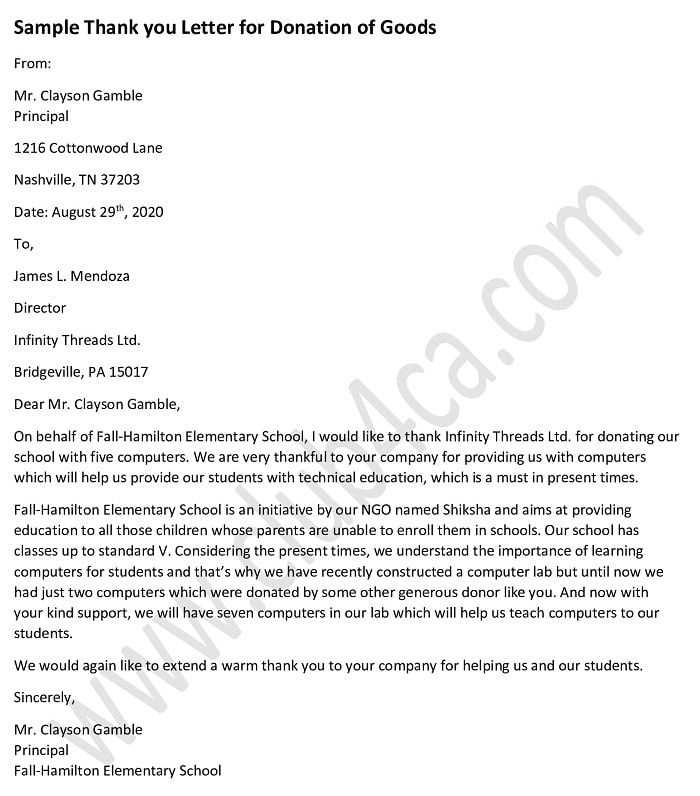
Expressing gratitude is an essential part of building strong, lasting relationships with individuals who contribute to your cause. A thoughtful message acknowledging their support fosters goodwill and encourages future involvement. Recognizing their generosity goes beyond a simple acknowledgment; it creates a sense of connection and appreciation.
Crafting a message of appreciation requires balance: it should be genuine, sincere, and reflect the impact of the contribution. While it’s important to show recognition, the tone must remain professional and heartfelt. The words used in such a message are key in conveying the right sentiment and ensuring the recipient feels valued.
In this guide, we will explore various ways to effectively communicate your gratitude. By the end, you’ll understand the critical elements of a well-crafted message and how to make it resonate with your audience.
Importance of Thank You Letters for Nonprofits
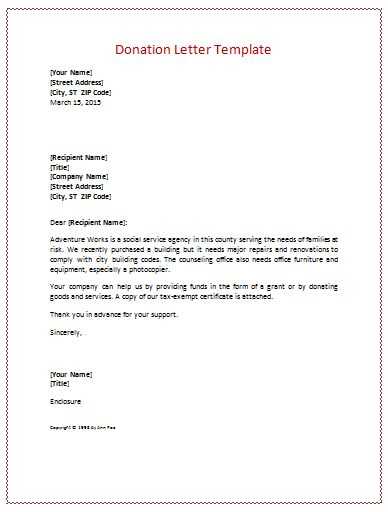
Showing appreciation is crucial for maintaining strong relationships with those who support your mission. A heartfelt expression of gratitude helps strengthen bonds and encourages ongoing involvement. It not only reassures donors and volunteers that their contributions are valued but also fosters a sense of community and shared purpose.
Sending a well-crafted acknowledgment message can significantly impact how supporters view your organization. It demonstrates professionalism, sincerity, and respect, all of which are essential for cultivating trust and loyalty. When individuals feel recognized, they are more likely to continue their support, whether through donations, time, or advocacy.
Additionally, these expressions of appreciation serve as a reminder of the tangible difference that their actions make. Highlighting the specific outcomes of their involvement can inspire further engagement and promote long-term commitment to your cause.
How to Write an Effective Donation Acknowledgement
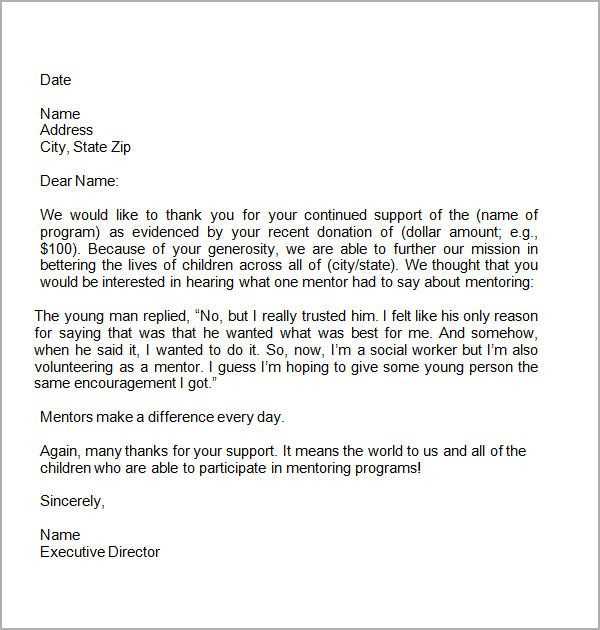
Creating a meaningful message to recognize contributions is essential for fostering lasting relationships with your supporters. An impactful acknowledgment goes beyond a simple “thank you” and should reflect the value of the donation, emphasizing how it contributes to your cause. Writing a message that resonates involves using clear language, being specific, and making the recipient feel appreciated.
Key Elements to Include
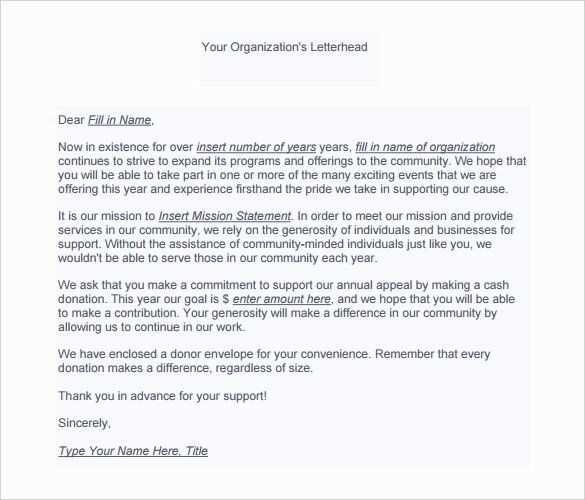
- Personalization: Address the donor by name and reference their specific contribution.
- Details of the Donation: Mention the amount or type of support provided, making it clear how it will be used.
- Impact: Highlight how their contribution will make a difference, connecting it to your organization’s goals.
- Expression of Gratitude: Use heartfelt language that communicates genuine appreciation for their generosity.
Best Practices for Crafting the Message
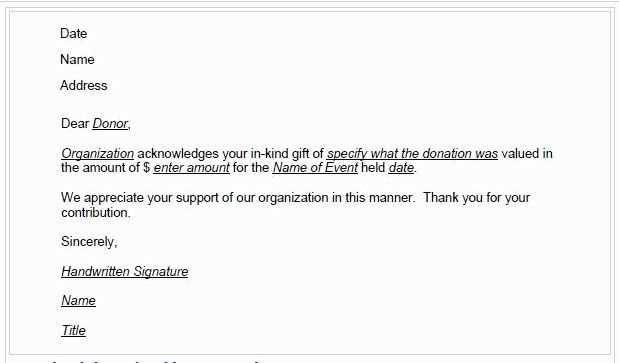
- Begin with a warm opening that acknowledges the support promptly.
- Be specific and transparent about how their contribution will be used or the results it will help achieve.
- Keep the tone professional, yet friendly, ensuring the message feels personal.
- Close with a statement reinforcing your appreciation and the importance of their continued involvement.
By including these essential components, you can craft a message that not only acknowledges the donation but also strengthens the connection with the donor, encouraging future support.
Personalizing Your Letter for Maximum Impact
Customizing your communication is essential for creating a deeper connection with your supporters. When individuals feel that their contribution is acknowledged in a personal and meaningful way, it strengthens their commitment to your cause. By tailoring your message to reflect their specific involvement, you demonstrate that their support is truly valued and make a more lasting impression.
One of the most effective ways to personalize is by including relevant details that show the impact of their actions. Highlighting their specific contribution or linking their donation to a specific project can significantly enhance the emotional resonance of the message. This not only reinforces the value of their support but also makes the recipient feel like an integral part of the mission.
| Personalization Technique | Benefit |
|---|---|
| Address by name | Creates a more intimate connection and shows respect for the individual. |
| Refer to specific donation or action | Clarifies the donor’s impact and shows attention to detail. |
| Use of donor’s past involvement or history | Demonstrates understanding of the donor’s ongoing support and engagement. |
| Share outcomes or goals linked to the contribution | Highlights the tangible results of the donor’s help, making them feel their contribution matters. |
By incorporating these strategies, you can ensure that your message stands out and makes a memorable impact. Personalization goes a long way in fostering loyalty and encouraging continued engagement.
Common Mistakes to Avoid in Thank You Letters
While expressing gratitude is important, how you convey that appreciation can make all the difference. A poorly crafted message may unintentionally diminish the impact of the sentiment or even cause confusion. To ensure your communication leaves a positive impression, it’s essential to avoid certain common pitfalls that can undermine the effectiveness of your message.
Being too generic can make your recipient feel like just another name on a list. If the message lacks personal touches or specific references to their support, it risks feeling impersonal and unimportant. Always aim to make the message feel unique to the individual.
Focusing only on the organization instead of acknowledging the donor’s specific contribution can turn the message into a self-promotional piece rather than a true expression of gratitude. The focus should always be on the donor and the meaningful impact of their actions.
Leaving out key details, such as the amount of support or how it will be used, can result in confusion or even disappointment. Providing this clarity not only enhances transparency but also reinforces the importance of their involvement in your mission.
Another mistake to avoid is sending a message too late. Delayed recognition can feel insincere and may lead recipients to question whether their contribution was truly appreciated. Timeliness is critical in maintaining positive relationships.
By steering clear of these common errors, you can ensure that your communication conveys genuine appreciation and builds stronger ties with your supporters.
Tips for Formatting Your Nonprofit Letter
Proper formatting is essential for making your communication look professional and easy to read. The way you structure your message can influence how well it’s received and understood. A clean, organized layout enhances readability and ensures that the key points of your message stand out.
Maintain a Clean and Simple Layout
Avoid cluttered text by keeping paragraphs short and using appropriate spacing. Use a clear, readable font like Arial or Times New Roman and keep the font size between 10 and 12 points. Heading styles should be consistent, helping to guide the reader through the content. A simple layout makes it easier for the recipient to engage with your message without distractions.
Use a Professional Tone and Structure
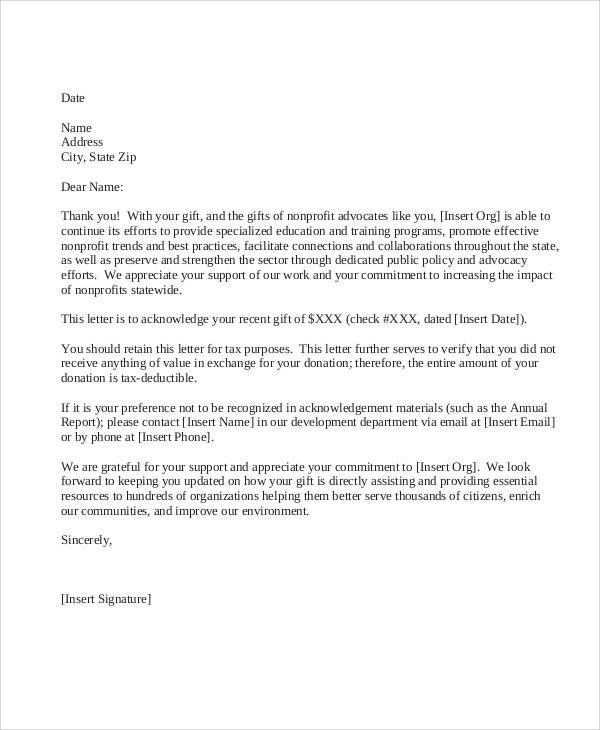
Make sure the overall tone remains professional yet warm. Begin with a greeting and a clear opening sentence that sets the tone for the rest of the message. Organize the content logically, with an introduction, a section detailing the donor’s impact, and a closing that reiterates your gratitude. This approach ensures the message is both impactful and easy to follow.
By adhering to these formatting tips, you ensure that your message conveys the right sentiment while maintaining professionalism and clarity.
How to Express Gratitude Without Overdoing It
Showing appreciation is important, but it’s equally crucial to strike the right balance. Overdoing it can make your message seem insincere or exaggerated, while being too brief might not convey the depth of your appreciation. Finding the sweet spot ensures your communication feels genuine and meaningful, without overwhelming the recipient.
Avoid Excessive Flattery
While it’s essential to acknowledge the recipient’s support, excessive praise can diminish the authenticity of your message. Focus on expressing sincere appreciation rather than overblown compliments. Highlight their specific contribution and its impact, rather than repeating general phrases like “you’re amazing” or “you’re a lifesaver.” Authenticity resonates more than exaggerated praise.
Keep the Tone Respectful and Genuine
Avoid being overly emotional or dramatic, as it may detract from the professionalism of the message. Express your gratitude in a warm, respectful tone that emphasizes the significance of their actions without resorting to over-the-top language. A simple, heartfelt message is often the most effective way to convey appreciation.
By maintaining a balance, your message will be perceived as genuine and heartfelt, making a lasting positive impression on the recipient.